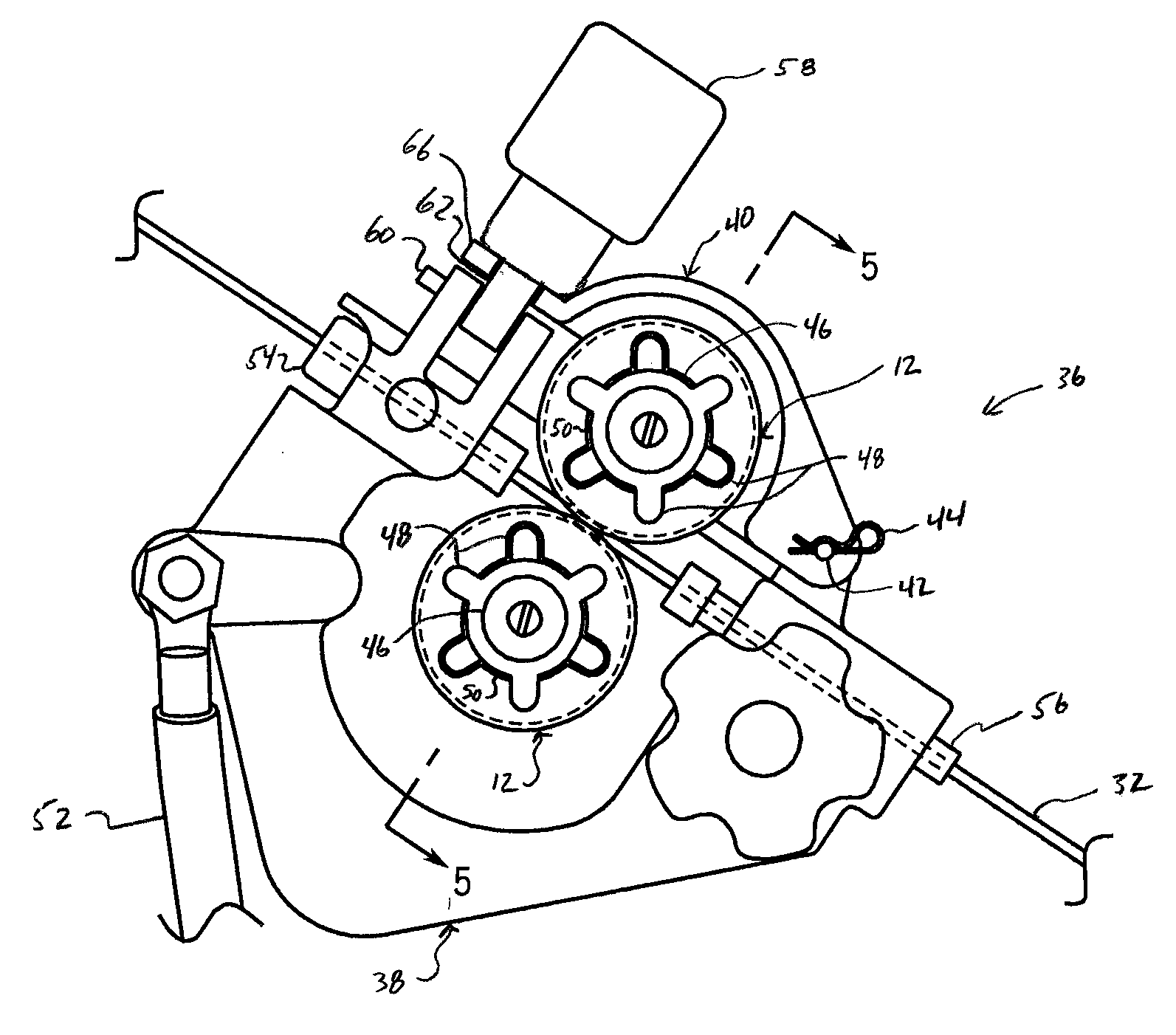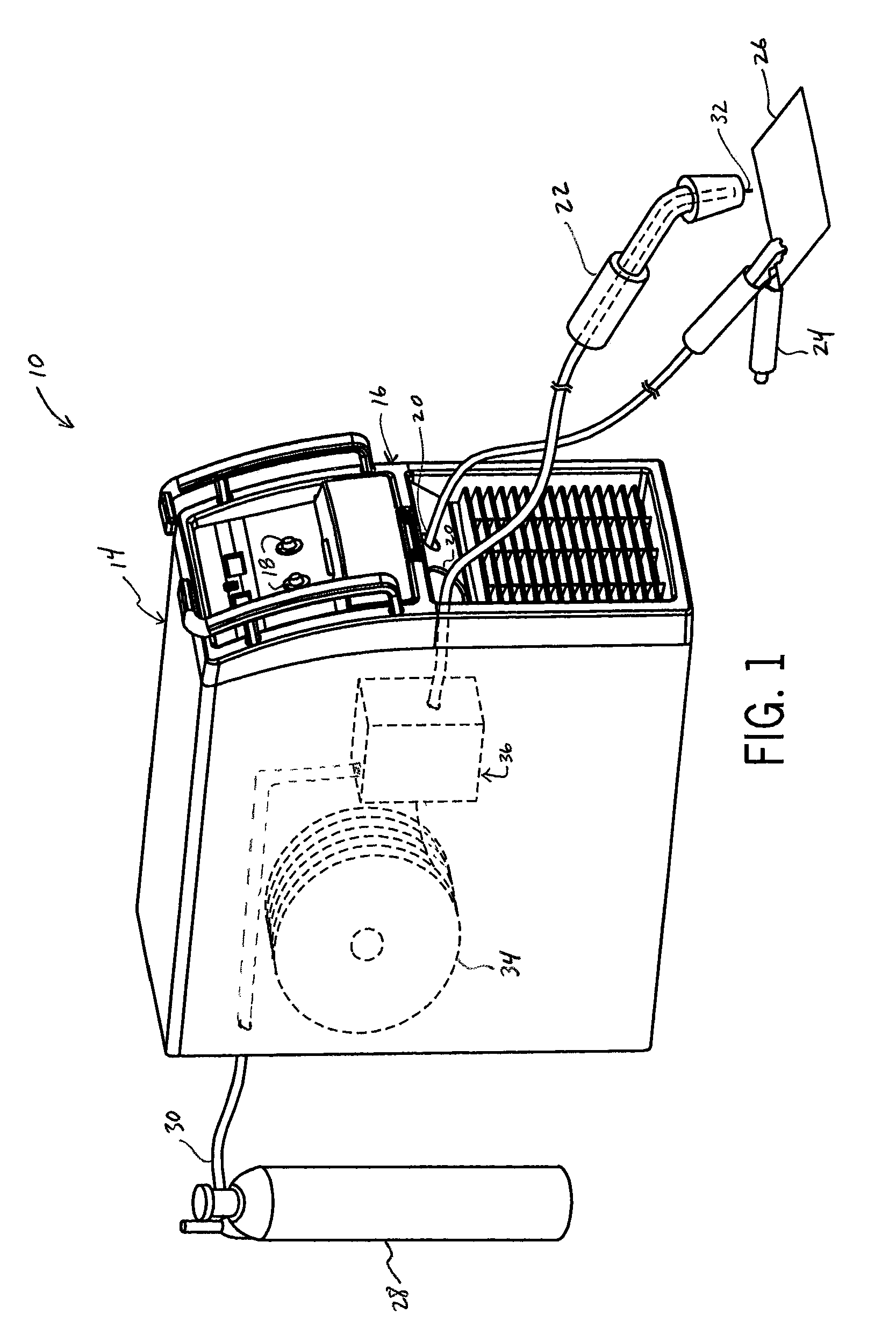Drive roll for a wire feeder
a technology of wire feeder and drive roll, which is applied in the field of drive roll, can solve the problems of poor quality welds or bird nesting, poor wire advancement accuracy, and wear of the drive roll, and achieve the effects of reducing the wear of the components
- Summary
- Abstract
- Description
- Claims
- Application Information
AI Technical Summary
Benefits of technology
Problems solved by technology
Method used
Image
Examples
Embodiment Construction
[0027]The present invention is described in relation to a gas metal arc welding (“GMAW”) system including a wire feeder having opposing drive rolls. However, the many aspects of the present invention are equally applicable to various other types of systems that require some form of drive roll to manipulate a driven object, such as a pipe roller. Moreover, numerous configurations of single or multiple drive rolls are contemplated by the present invention. For example, while a pair of opposing drive rolls are described, two pairs of opposing drive rolls may be configured or a three-to-two configuration may be used where the weight of the driven object requires additional support (i.e., three drive rolls beneath the object and two above). Furthermore, multiple drive rolls may be used where the driven object is highly sensitive to surface pressure, as the use of multiple drive rolls in accordance with the present invention will help disperse the overall forces applied to the object.
[002...
PUM
| Property | Measurement | Unit |
|---|---|---|
| area | aaaaa | aaaaa |
| angle | aaaaa | aaaaa |
| electrical | aaaaa | aaaaa |
Abstract
Description
Claims
Application Information
 Login to View More
Login to View More - R&D
- Intellectual Property
- Life Sciences
- Materials
- Tech Scout
- Unparalleled Data Quality
- Higher Quality Content
- 60% Fewer Hallucinations
Browse by: Latest US Patents, China's latest patents, Technical Efficacy Thesaurus, Application Domain, Technology Topic, Popular Technical Reports.
© 2025 PatSnap. All rights reserved.Legal|Privacy policy|Modern Slavery Act Transparency Statement|Sitemap|About US| Contact US: help@patsnap.com



